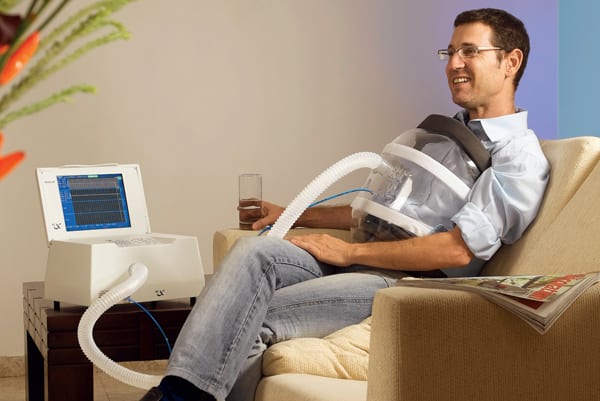In late May 2011, Lynn became very sleepy. He was so tired he could hardly stay out of bed. I listened to his lungs, and they sounded very noisy in some areas and almost no movement in others. His home health nurse thought we should go to the ED, and finally, even he agreed. We went in on Friday, and he entered the Neuroscience ICU immediately. On Saturday, his blood gases were so bad that had his gases not improved within a particular 30 minute period, they were going to intubate him and put him on a ventilator. They warned me that if that happened, he might not be able to come off because his lungs had gotten very weak.
That was the first time that I actually got scared about the possibility that Lynn might die. I was alone at the hospital, but I had lots of support there. I had many friends among the staff members and knew they were all doing their best. We had one excellent Respiratory Therapist that was keeping watch on him, so I knew he was in good hands. However, I couldn’t trust that those hands were enough, so I sent out a call for prayer to several people. When I got back messages they were praying, Lynn started to wake up, and he started making progress toward getting better.
Lynn hated the mask he had to keep on to help him breathe, but if he took it off, his oxygen levels became too low. God was again looking out for us because the Respiratory Therapist knew about a new device that she had seen used successfully for cystic fibrosis kids and ALS patients. It was called a Hayek ventilator. It works on the iron lung principle, but it’s very lightweight, and the patient can move around with it if needed. She helped get it for him, and he found it to be very comfortable and an effective way to support his breathing without a mask!
Now that his lungs are better, he uses the Hayek only at night in place of BiPAP. (Bipap is like Cpap – continuous positive pressure, but it also delivers intermittent breaths). I put the Hayek over his chest when he goes to bed, strap it on, so there are no air leaks, and turn on the machine that pumps the air in and out. As the force of pressure pushes down and releases on the chest, breathes are drawn into and out of the lung (inhalation and exhalation). The only thing uncomfortable is that it makes him feel cold (but he has hypothyroidism as well, so he’s susceptible to cold.)
If your MS patient has any respiratory issues or even sleep apnea that doesn’t respond to CPAP or Bipap, check this out. Go to www.Unitedhayek.com It made a difference for Lynn.


A well written article. I’m always looking for stuff like this.